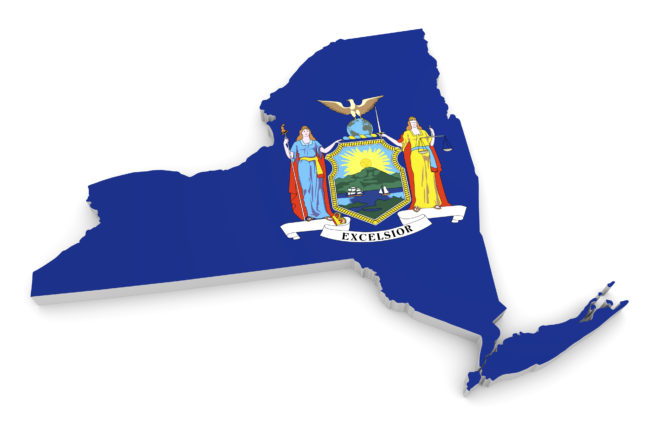On June 28, 2018, the New York State Department of Environmental Conservation (DEC) promulgated revisions to the State Environmental Quality Review Act (SEQRA).
These are the first substantial revisions to SEQRA in over 20 years.The amendments go into effect beginning January 1, 2019 and will apply to all pending and future actions.
Under SEQRA, actions are classified into three main designations: Type I, Type II, and Unlisted. The new amendments provide major changes to the types of projects that fall under the Type I and Type II classifications.
The new amendments reduce the threshold for certain Type I actions. A Type I action is an action that is “more likely to have a significant adverse impact on the environment” and these actions are specifically enumerated in the statute (6 NYCRR §617.4). Because of their increased potential for adverse environmental impacts, agencies undertaking actions classified as Type I must complete a Long-Form Environmental Assessment Form (EAF) and the actions are more likely to require completion of Environmental Impact Statements (EIS). The DEC added the following specific actions to the list of Type I actions:
- Parking for 500 vehicles in a city, town or village having a population of 150,000 persons or less;
- Parking for 1,000 vehicles in a city, town or village having a population of more than 150,000 persons(language in italics is new).
The DEC also reduced the threshold for classification as a Type I action for projects adding new units to an existing community or public water systems or sewage systems from 1,000 units to 500 units in cities, towns and villages with populations over 150,000 and from 250 units to 200 units in cities, towns and villages with populations of 150,000 or less. This means that smaller projects will now be classified as Type I actions and require additional environmental investigation and reporting.
Lastly, there was a significant change to the distinction between Unlisted and Type I actions based on their proximity to sites listed on the National or State Register of Historic Places. Previously, any action located wholly or partially in, or contiguous to, a place or district on one of the Historic Registers was automatically a Type I action.
Now, to automatically qualify, the action must also exceed 25% of some other Type I threshold. This means location alone is not enough for an action to automatically be deemed Type I. However, the DEC also increased the number of potential properties triggering this new calculation by including those properties that are merely “eligible” for inclusion on one of the Historic Registers.
Conversely, Type II actions are those that “have been determined not to have a significant impact on the environment or are otherwise precluded from environmental review.” These are also enumerated in the statute itself (6 NYCRR § 617.5). The amendments create numerous new categories of SEQRA-exempt Type II actions.
Specifically, the DEC added the following Type II actions:
- Retrofit of an existing structure and its appurtenant areas to incorporate green infrastructure;
- Installation of telecommunication cables in existing highway or utility rights of way utilizing trenchless burial or aerial placement on existing poles;
- Installation of solar energy arrays where such installation involves 25 acres or less of physical alteration on the following sites: closed landfills; completed brownfield sites; completed inactive hazardous waste disposal sites; currently disturbed areas at publically-owned wastewater treatment facilities; currently disturbed areas at sites zoned for industrial use; and parking lots and parking garages;
- Installation of solar energy arrays on an existing structure (with several caveats);
- Reuse of a residential or commercial structure, or of a structure containing mixed residential and commercial uses;
- Recommendations of a county or regional planning board or agency pursuant to General Municipal Law sections 239-m or 239-n;
- An agency’s acquisition and dedication of 25 acres or less of land for parkland;
- Sale and conveyance of real property by public auction pursuant to article 11 of the Real Property Tax Law; and
- Construction and operation of an anaerobic digester, within currently disturbed areas at an operating publically-owned landfill.
The amendments also require mandatory scoping procedures (6 NYCRR § 617.8) prior to the preparation of any EIS. Previously, these procedures were an optional step in the SEQRA process. In projects with known adverse impacts, the mandatory scoping requirement has the potential to delay the action as it essentially duplicates work that will later be required in an EIS.
The amendments seek to accelerate the EIS process by avoiding debate over when a Draft Environmental Impact Statement (DEIS) is officially complete. A DEIS will be now be deemed complete when it (1) meets the requirements of the written final scope and sections 617.8(g) and 617.9(b) of the SEQRA regulations; and (2) provides the public and involved agencies with the necessary information to evaluate project impacts, alternatives, and mitigation measures. Additionally, if a DEIS is deemed incomplete, the lead agency must submit a written list of deficiencies which, in turn, constitute the only criteria that can be used to judge the resubmitted version.
Lastly, the new amendments specify publishing requirements for lead agencies. Draft and final scopes and draft and final EISs must be published on the lead agency’s website until one year after all necessary federal, state and local permits are issued or after the action is funded or undertaken, which is later.
As noted above, the greatest change to SEQRA is found in the list of Type II actions. The new amendments seek to promote New York’s “green” industry by allowing certain redevelopment projects to qualify as Type II actions. The updates to SEQRA can be reviewed in their entirety on the DEC’s website.

